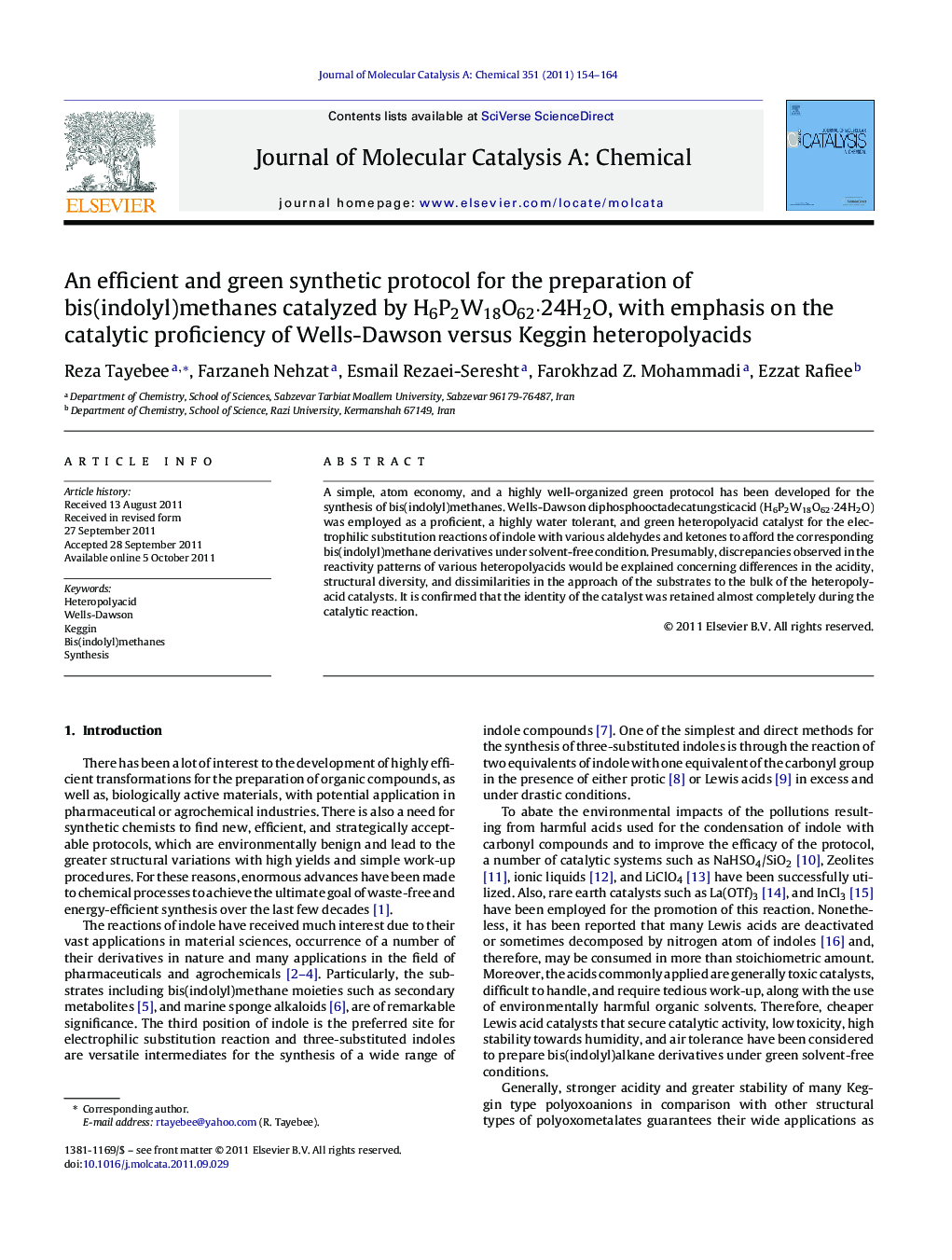| Article ID | Journal | Published Year | Pages | File Type |
|---|---|---|---|---|
| 66399 | Journal of Molecular Catalysis A: Chemical | 2011 | 11 Pages |
A simple, atom economy, and a highly well-organized green protocol has been developed for the synthesis of bis(indolyl)methanes. Wells-Dawson diphosphooctadecatungsticacid (H6P2W18O62·24H2O) was employed as a proficient, a highly water tolerant, and green heteropolyacid catalyst for the electrophilic substitution reactions of indole with various aldehydes and ketones to afford the corresponding bis(indolyl)methane derivatives under solvent-free condition. Presumably, discrepancies observed in the reactivity patterns of various heteropolyacids would be explained concerning differences in the acidity, structural diversity, and dissimilarities in the approach of the substrates to the bulk of the heteropolyacid catalysts. It is confirmed that the identity of the catalyst was retained almost completely during the catalytic reaction.
Graphical abstractFigure optionsDownload full-size imageDownload high-quality image (147 K)Download as PowerPoint slideHighlights► New catalytic application for Wells-Dawson heteropolyacid H6P2W18O62·24H2O. ► Synthesis of indole derivatives using Wells-Dawson heteropolyacids. ► Uncommon high activity of Wells-Dawson heteropolyacids against Keggin types. ► The present protocol is not totally acid catalyzed. ► High stability and excellent reusability of the catalyst.
